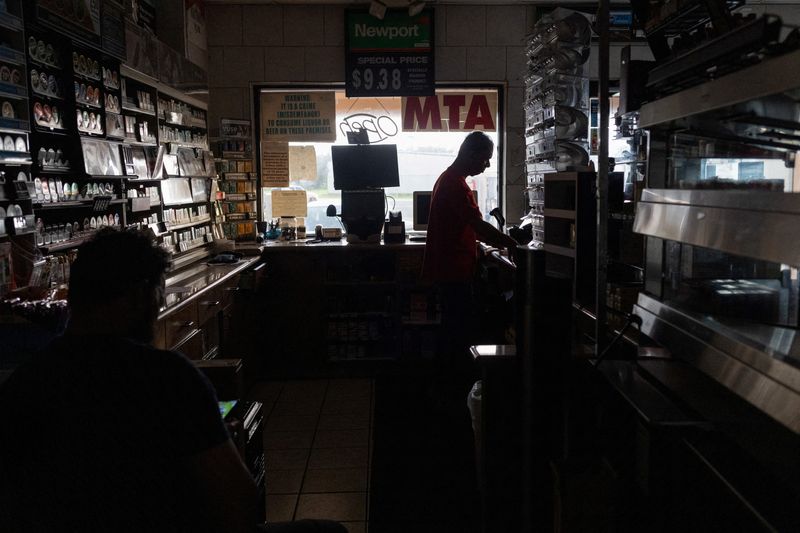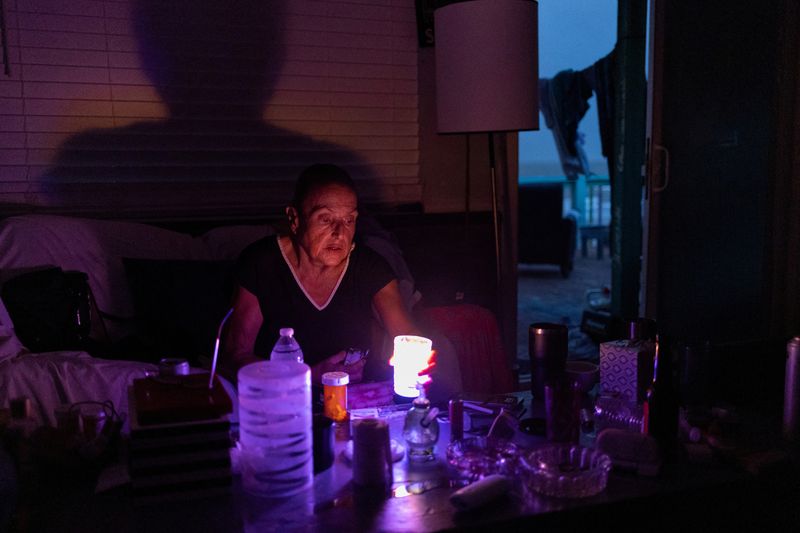
By Arathy Somasekhar, Curtis Williams and Georgina McCartney
HOUSTON/FREEPORT (Reuters) -More than 1.2 million homes and businesses in Texas remained without power on Thursday, four days after Hurricane Beryl lashed the state with fierce winds and flooding, sparking frustration among companies, officials and residents who were facing extreme heat.
About half of CenterPoint Energy (NYSE:CNP)’s 2.3 million customers had been restored by Thursday morning, the company said, following Beryl’s landfall near Matagorda. CenterPoint is Texas’ largest electricity provider.
Hiccups in the restoration of power are slowing down some companies’ efforts to return operations to normal, especially around Freeport, among Texas’ largest energy hubs. However, most oil and gas companies have resumed normal operations after Beryl made landfall as a Category-1 storm.
Freeport LNG, the U.S. third largest liquefied natural gas (LNG) producer, began pulling in small volumes of natural gas for processing on Thursday, according to data from financial firm LSEG. The company has not provided an operational update since Sunday, when it said it ramped down production.
A small flare could be seen flickering at the facility, according to a Reuters witness.
No vessels were docked at the LNG company’s berths, but many power restoration crews were working in the area with service trucks arriving from as far as Nebraska and North Carolina, according to locals interviewed by Reuters.
“The major concern of the week over the impact of Hurricane Beryl on U.S. LNG production has receded,” said consultancy Rystad’s vice president, Wei Xiong, in a note to clients.
The port of Freeport said restrictions for navigating during daylight could be lifted on Thursday.
U.S. natural gas futures fell about 2% to a two-month low on Thursday on a bigger-than-expected weekly storage build as output rose and the amount of gas flowing to LNG export plants dropped due to Beryl.
Chemical maker Olin (NYSE:OLN) on Wednesday declared a force majeure for some product and aromatic shipments after Beryl caused damage to its Freeport facilities. The firm said the duration of the disruption was uncertain.
The ports of Houston, Galveston and Texas City were open on Thursday, with some of them operating with restrictions that were expected to be lifted soon.
The Texas Gulf Coast is home to massive oil and gas processing facilities, as well as export plants and chemical manufacturers. Texas accounts for 40% of U.S. oil output and 20% of the country’s natural gas production.
Refineries, offshore production sites and ports saw limited damage and had largely returned to normal operations by Thursday.
BACKLASH
CenterPoint has been facing scrutiny over its preparations ahead of Beryl and speed of reaction. In a letter to CenterPoint, Congresswoman Sylvia Garcia called the slow restoration of power a public health crisis.
The utility said on Wednesday it expected to restore power to an additional 400,000 customers by Friday and 350,000 customers by Sunday. In total, 2.26 million of its customers lost power in the storm.
“We did not have material damage to our transmission system or substations or flooding of substations,” CenterPoint executive vice president, Jason Ryan, told Texas commissioners on Thursday.

Temperatures in southeast Texas were in the low to mid-90 degrees Fahrenheit (low to mid-32 degrees Celsius) on Thursday, with heat indices in the 100s, the National Weather Service said on Thursday.
Damage from Beryl could cost insurers in the United States roughly $2.7 million, catastrophe modeling company Karen Clark & Co said on Thursday.
This post is originally published on INVESTING.


